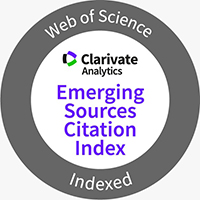A Case Report of Moderate Iodinated Contrast Agent Extravasation and Review of the Literature
DOI:
https://doi.org/10.3941/jrcr.5512Abstract
This article encapsulates the nursing methodologies and encounters in managing a case of moderate intravenous extravasation of iodinated contrast media, with the objective to furnish references for diminishing the incidence of intravenous extravasation of iodine contrast media and mitigating the accompanying tissue injury.
Enhanced CT, predicated on conventional CT plain scanning, involves the instantaneous bolus infusion of iodinated contrast media (ICM) into peripheral superficial veins via a high- pressure injector. The ICM subsequently transits through the peripheral circulation to reach the target lesion site. By leveraging the differential phagocytosis of ICM between normal tissues and pathological areas, this technology facilitates the qualitative detection and differential diagnosis of abnormalities [1]. In instances where the ICM fails to enter the intended vessel and is instead disseminated into the perivascular tissue, which is defined as intravenous extravasation of ICM, it may precipitate local tissue complications such as pain, swelling, bulla formation, secondary wound infections, abscesses, tissue adhesions, compartment syndrome, and, occasionally, amputation [2,3]. Literature [4] has previously delineated a grading system for ICM-induced extravasation injuries: (1) Mild: characterized by pain, inflammation, minor erythema, and mild to moderate edema solely; (2) Moderate: featuring moderate to severe erythema, bulla formation, persistent pain, or other wounds necessitating additional therapy, with all symptoms subsiding within two weeks; (3) Severe: manifesting by profound erythema, blistering, persistent pain and swelling, skin discoloration, tissue necrosis, necessitating additional therapies or surgical intervention. Irrespective of its severity, ICM extravasation detrimentally affects patients' physiological and psychological health, potentially culminating in extensive hospitalization and elevated costs. Hence, scholars globally have directed significant attention to investigating the injuries inflicted by ICM extravasations, identifying influencing factors, formulating intervention strategies, and devising preventive measures, yielding an abundance of research achievements [5]. Recently, a case of moderate ICM extravasation occurred at our institution, which, subsequent to proactive nursing interventions, resulted in a positive prognosis for the patient. The specifics of the case and the implemented interventions are detailed as follows.

Downloads
Published
Issue
Section
License
Copyright (c) 2024 Journal of Radiology Case Reports

This work is licensed under a Creative Commons Attribution-NonCommercial-NoDerivatives 4.0 International License.
The publisher holds the copyright to the published articles and contents. However, the articles in this journal are open-access articles distributed under the terms of the Creative Commons Attribution-NonCommercial-NoDerivs 4.0 License, which permits reproduction and distribution, provided the original work is properly cited. The publisher and author have the right to use the text, images and other multimedia contents from the submitted work for further usage in affiliated programs. Commercial use and derivative works are not permitted, unless explicitly allowed by the publisher.





